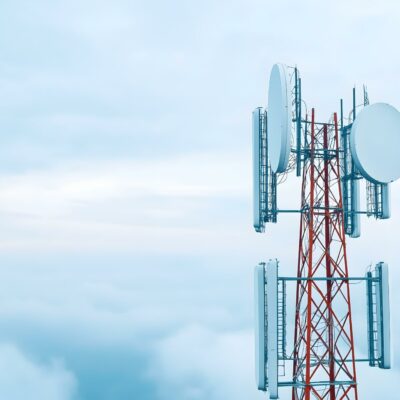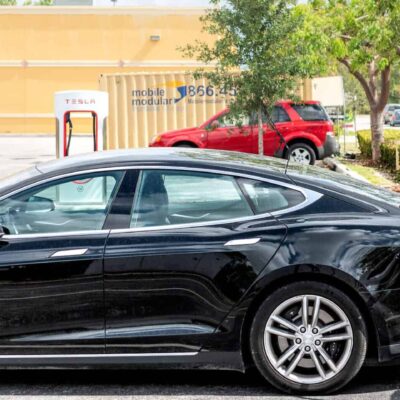2024 is projected to be a year of significant transformation across the American automotive market as the industry continues to be marred by rapid technological advancements, heightened government regulation, and shifting consumer preferences. The increasing number of companies joining the EV fray has set the stage for an uptick in complex legal challenges, including patent disputes, trade secret misappropriation matters, and conflicts pertaining to system security, which are becoming more prevalent as the wireless capabilities of these vehicles expand.
An Automotive Expert’s Insight
To better understand what types of conflicts we should expect to see throughout 2024 and beyond, we asked WIT Panel Member and highly regarded automotive industry expert, Julie Wurmlinger, for her thoughts on the industry’s legal landscape. Ms. Wurmlinger has more than 30 years of industry experience and actively consults clients on electronics, IT, automotive engineering, and more. Let’s look at what she has to say about the state of the market and potential future conflicts.
WIT: Do you feel that 2024 will see a similar legal landscape to 2023 in terms of case type?
WURMLINGER: In 2024, the legal landscape is expected to evolve slightly, influenced by several factors:
- Shift in demand for Electric Vehicles (EV), Hybrid Vehicles (HV), and Internal Combustion Engines (ICE): There’s a slight dip in EV demand due to concerns about charging infrastructure, battery range, and purchase and repair costs. Conversely, there’s a renewed interest in ICE and hybrid vehicles, especially in the United States. Perhaps in response to the decline in EV desire or the increasing maturity of EV technology, there was a decline in EV patents from Q2 to Q3 in 2023, and this trend could feasibly continue into 2024. It is also possible that the U.S. could surpass China in EV patent filings for 2024, reflecting recent trends.
- Autonomous Vehicles and Liability: With EV demand wavering, focus is shifting towards AI and autonomous technologies, which are independent of propulsion technology. Increased litigation in this domain is likely, particularly with the rise in autonomous technology and IP protection thereof. Recent incidents with autonomous taxis like GM Cruise and Tesla highlight issues of safety and reliability regarding driverless ridesharing. Given the increase of autonomous technologies and in particular Automated Driver Assist Systems (ADAS), I predict that the liability shift will be toward the OEM or supplier of the ADAS system as opposed to the vehicle operator, giving potential rise to more class-action litigation as opposed to one-off driver-responsible events.
- Joint Ventures and Autonomous Technology: OEMs are increasingly opting for joint ventures for specialized autonomous features. This could lead to more litigation around profits, IP, and customer concerns.
- OTA and Big Data: The implementation of ‘impaired driving prevention technology’, as mandated by the 2021 Infrastructure Investment and Jobs Act, will bring a set of new challenges to monitor. The industry is facing a steep learning curve in adapting this technology, ensuring reliability, and addressing privacy concerns inherent in managing the driver data to enact this technology. I predict that litigation will begin to appear in this space in 2024 as companies will look to defend their IP and ensure compliance with Fourth Amendment privacy rights in this very technologically challenging space.
- Post-Pandemic Litigation: With the easing of pandemic-related backlogs, IP cases that were previously de-prioritized are finally reaching dockets, attaining trial resolution or settlement. This may result in significant judgements in 2024 that will influence future automotive litigation, standards, and legislation.
WIT: What do you expect to see more of in the auto industry this year?
WURMLINGER: In 2024, I expect the auto industry to experience significant technological advancements. A notable trend will be the increased use of AI and Machine Learning (ML) to advance vehicles to higher levels of autonomy, specifically moving rapidly from Level 2 and 3 to the more advanced Level 4 and 5 autonomy. This development involves the use of sophisticated algorithms by vehicles’ on-board computers, enabling them to interpret data gathered while driving, and act on behalf of the driver under certain conditions. These algorithms are designed for “learning,” enhancing accuracy and operation in a manner akin to human learning through feedback loops. As a result, we can expect most new vehicles on the road to reach higher autonomous operation levels.
There will also be a significant growth in valuable IP portfolios within the industry. This expansion will be driven by rapid advancements in areas such as AI, IoT, semiconductor technology, and the topology of electronics and propulsion components in vehicles. As the value of these IP portfolios increases, it is anticipated that there will be more litigation surrounding these assets, accompanied by a trend towards more detailed and specific patent technology applications.
Another emerging trend will be the increased adoption of blockchain technology, employed as a countermeasure against hacking and malware. This will be particularly relevant for autonomous vehicles with central systems, where security is paramount.
Finally, the use of 3D printing technology in the manufacturing of automotive components, especially fiberglass, is expected to rise. This technology allows for more efficient and flexible production processes, which is revolutionizing the way automotive components are manufactured.
WIT: How do you feel increased connectivity will affect the automotive industry as wireless capabilities and integrations expand in 2024?
WURMLINGER: I see that increased connectivity will have an effect on the industry in a number of ways, including, but not limited to, revenue-driven feature focus, the socialization of Standard Essential Patents (SEPs) in the automotive industry, and ongoing concerns over data protection and cyber-security.
Revenue and profit models will increasingly focus on features that enhance safety, maintenance diagnostics, history, and route guidance, as these are the connectivity features in which consumers are showing the most interest. Notably, under-developed markets demonstrate a greater willingness to pay for these features compared to developed markets, likely due to the absence of supporting local or regional infrastructure in under-developed markets.
The concept of standard-essential patents (SEPs) has become prominent in the automotive sector, especially through the adoption of various connectivity technologies like 5G, 4G, 3G, 2G, and C-V2X. For context, the number of 5G patents, in general, stands at around 60,000, or a 250% increase over those for 4G. Avanci, a patent licensing platform operator, created an SEP patent pool for 4G and 5G technology with over 60 initial licensees as of 3Q 2023, which could grow in 2024, and will ultimately curb automotive connectivity patent litigation.
Data protection and cybersecurity also present ongoing challenges. Currently, this space is largely unregulated, leaving vehicle and infrastructure data potentially vulnerable to hacking and compromise. While government entities have proposed cybersecurity standards for service providers, these have yet to be adopted or regulated. Additionally, concerns around data privacy and potential Fourth Amendment violations continue to be relevant. The distinction between data being “lawfully retrieved” and “legally retrieved” is critical, as it may lead to litigation risks for entities accessing this data.
WIT: As competition in the auto industry ramps up, where do you see the potential for disputes regarding the evolution and electrification of the space in 2024?
WURMLINGER: Electric vehicle startups will continue to challenge OEMs, and each other, for a share of the EV market in 2024. Startups are typically unencumbered by the bureaucracy of OEM practices and processes and can solely focus on new products, cutting development time substantially. In particular, EV startups that focus on areas like charging infrastructure and battery technology attract significant investor interest due to quicker time-to-profit.
As range anxiety remains a concern for EV buyers, I predict that patent trends and competitive pressures will continue in 2024 on advancements in battery technology and charging technology/infrastructure. AI and Machine Learning are increasingly being used to discretely optimize battery life by analyzing driver usage patterns, and enhancing range and reliability. Solid-state battery technology is another exciting area, offering more range, safer composition, and faster charging. This technology, expected to be tested by major OEMs in late 2024 or early 2025, inhibits dendrite formation, thereby improving recharge capacity. Another major OEM is developing a proprietary solid-state battery, which is targeted for mass production in 2028.
Wireless charging technology for automotive batteries is another notable development. This technology facilitates Vehicle-to-Grid communications, allowing regulation of charging rates and potential electricity return to the grid. Wireless charging could also open opportunities for clean-energy credits for OEMs or startups, making it an area worth monitoring in 2024.
WIT: With innovation in autonomous technology increasing, where do we see the risks for litigation surrounding autonomous vehicles?
WURMLINGER: In addition to the areas mentioned above, innovations in autonomous vehicle technology increase the potential for litigation in several areas:
- Data Security and Transparency in Generative AI Systems: As AI and ML algorithms rely on server-stored data, some of which is confidential, there’s a risk of litigation if this data is disclosed to other platform users. The Samsung and ChatGPT litigation matter is an example of such a case. Conversely, auto manufacturers need to be cautious about juror perceptions in litigation which presents heavily redacted case data, and should instead consider methods for sharing data safely and securely.
- Evolving Regulations and Standards: With regulatory oversight for autonomous vehicles still in flux, manufacturers should focus on safety case studies, engineering best practices, and detailed manuals that incorporate global mobility partner experience and existing standards of excellence.
- Remote Assistance (RA) and Operational Responsibility: The legal and regulatory foundation for disclosures of remote assistance and other operational strategies in autonomous vehicles is unclear. Lack of full disclosure and regulatory requirements for RA disclosure could lead to complex litigation and negatively impact the technology’s reputation, especially in incidents involving pedestrians and human drivers.
- Human Recognition and Robotaxi Operation: Difficulties with distinguishing pedestrians from robotaxi customers in urban areas, especially in heavy traffic, increase the risk of safety-related litigation. There are no regulated zones for robotaxi pick-up/drop-off (PuDo) points. Improving human recognition software and designating pre-determined routes and PuDo points, similar to public buses, could help mitigate litigation risks.
How Experts Can Help Mitigate Risk
When considering the complications above, let’s evaluate the essential role that experts play in preparing for complex litigation involving automotive technology.
Looking at intellectual property, disputes regarding proprietary EV technology will likely ramp up as auto industry players attempt to stake their claim in the market. As more and more automakers enter the arena and industry suppliers work across verticals, protecting innovation is essential. Experts in these conflicts can step in to evaluate patent pools, complete damages analyses, and examine EV software to mitigate risk and form a strong litigation strategy.
Mergers, acquisitions, and impending joint ventures, especially those involving start-ups, will also be an area to watch as companies look to ignite growth and acquire high-quality tech talent. M&As in this sector are steadily increasing, meaning the risk of litigation regarding these activities will likely increase as well. Engaging with an automotive industry expert can help those involved in M&A transactions understand the contracts, finances, and due diligence associated with acquisitions.
Lastly, conflicts surrounding connected vehicle technology and AI are sure to ramp up as 5G technology improves, 6G technology prepares for launch, and manufacturers look to make their vehicles “stand out from the crowd” in terms of technology offerings. Collaborating with a wireless expert can help you mitigate the risks associated with EV software, wireless networks, and connectivity.
Want to learn more about what’s to come in the automotive industry and electric vehicles market? Reach out to learn more about our electric vehicles expert team, created to address what we expect to be the key areas of litigation in the move to electric and autonomous vehicles.




